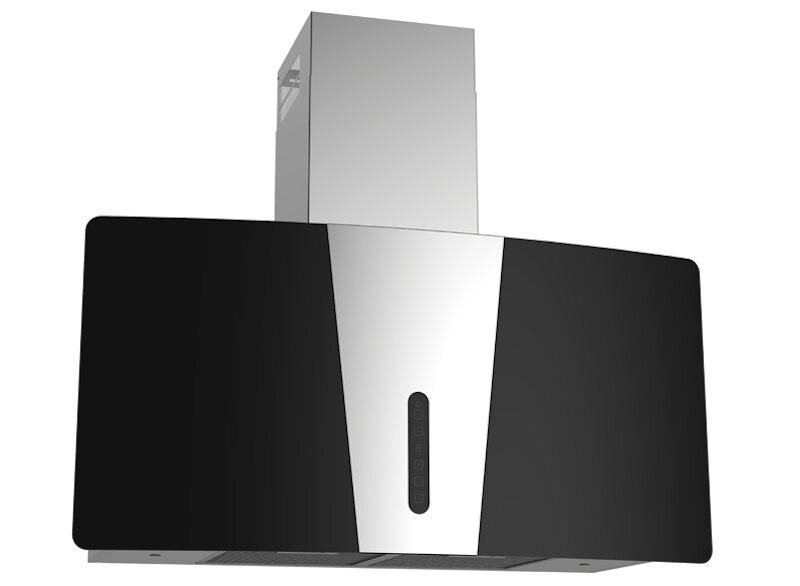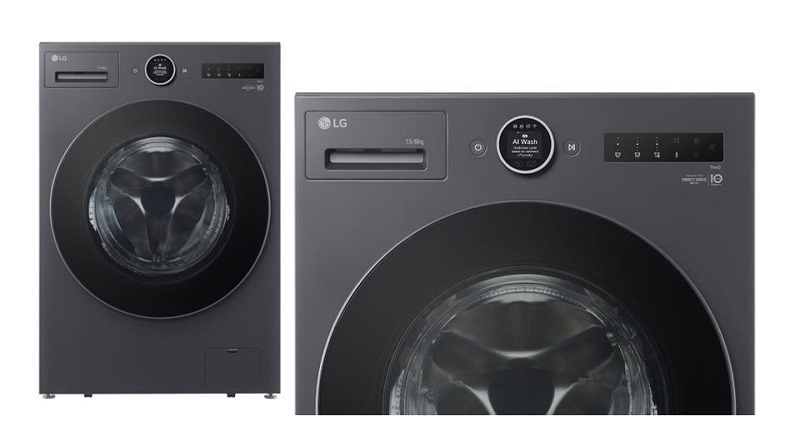Đáp án và đề thi trực tuyến tiếng Anh dành cho sĩ tử trên Dân trí
(Dân trí) - Chiều ngày 30/1, buổi thi trực tuyến tiếng Anh kiểm tra “phong độ” của sĩ tử 2016 trên Dân trí đã thu hút hàng nghìn lượt thí sinh dự thi. Dưới đây là đề thi và đáp án của buổi thi này.
Ban tổ chức sẽ trao 1 giải nhất cho thí sinh điểm cao nhất, thời gian thi ngắn nhất là 1 triệu đồng. Ngoài ra, Ban tổ chức tặng 10 giải khuyến học cho 10 thí sinh có mức điểm cao của cuộc thi (mức điểm lấy từ cao xuống thấp).
Đề thi:
ĐỀ THI THỬ TRỰC TUYẾN
Môn thi: TIẾNG ANH
Thời gian làm bài: 90 phút, không kể thời gian phát đề
SECTION A
Mark the letter A, B, C or D on your answer sheet to indicate the word whose underlined part differs from the other three in pronunciation in each of the following questions.
Question 1. A. heat B. threat C. beat D. leech
Question 2. A. education B. individual C. procedure D. productive
Mark the letter A, B, C or D on your answer sheet to indicate the word that differs from the other three in the position of primary stress in each of the following questions.
Question 3. A. citizen B. civilian C. citadel D. circular
Question 4. A. evaluate B. category C. investigate D. exception
Question 5. A. control B constant C. contour D. contrary
Mark the letter A, B, C or D on your answer sheet to indicate the correct answer to each of the following questions.
Question 6. The recommendation that all people______was approved.
A. will evaluate B. are evaluated C. will be evaluated D. be evaluated
Question 7. Rarely_____remove the entire root of a dandelion because of its length and sturdiness.
A. can the casual gardener B. the casual gardener
C. the casual gardener will D. does the casual gardener’s
Question 8. Her room is very large. She is dreaming of a ________.
A. round big wooden table B. wooden big round table
C. big round wooden table D. table big wooden round
Question 9. It is a formal occasion so we will have to________ to the nines- no jeans and pullover this time.
A. wear in B. get dressed up
C. put on D. hitch up
Question 10. ________that we all went for a picnic.
A. Such a fine weather was it B. It was such a fine weather
C. So fine was the weather D. So fine the weather
Question 11. What did you think of the book?
- ___________ the books I’ve read. It was the most interesting.
A. All B. From all C. Of all D. All of
Question 12. If you _____ to my advice in the first place, you wouldn’t be in this mess now.
A. had listened B. listen C. will listen D. listened
Question 13. Janet: “Do you like going to the cinema this evening?”
- Susan: “_______”
A. I don’t agree, I’m afraid B. That would be great
C. You’re welcome D. I feel very bored
Question 14. Many scientists _____ all their lives to working out answers to problems.
A. promote B. spend C. devote D. send
Question 15. The new manager _______very strict rules as soon as he had _______ the position.
A. laid down/taken over B. put down/taken over
C. lay down/taken up D. wrote down/come over
Question 16. After the flash flood, all the drains were overflowing________ storm water.
A. with B. by C. from D. for
Question 17. The fire was caused by an__________ fault in the television.
A. electrician B. electricity C. electrical D. electric
Question 18. The robber was made __________ where he had hidden the money.
A. to confess B. confess C. confessing D. to confessing
Question 19. He may be shy now, but he will soon come out of his__________ when he meets the right girl.
A. shoe B. shell C. shed D. hole
Question 20. By the year 2050, many people currently employed __________ their jobs.
A. have lost B. will be losing C. will have lost D. are losing
Question 21. He left the country__________ arrest if he returned.
A. with fear of B. under threat of C. with threat of D.in fear with
Question 22. “Were you involved in the accident?”
- “Yes. But I wasn’t to _______ for it”
A. blame B. accuse C.charge D. apologize
Question 23._________in 1776 that the Declaration of independence was signed.
A. It is B. It was C. It D. There was
Question 24.__________ a person gets, _________ the chance he will develop a disease that harms the brain.
A. so old – greater B. too old - a lot greater
C. the older – the greater D. the oldest – the greatest
Mark the letter A, B, C or D on your answer sheet to indicate the word(s) CLOSEST in meaning to the underlined word(s) in each of the following questions.
Question 25. The teacher gave some suggestions on what could come out for the examination.
A. effects B. symptoms C. hints D.demonstrations
Question 26. Whenever problems come up, we discuss them frankly and find solutions quickly.
A. clean B. encounter C. arrive D. happen
Question 27. Unselfishness is the very essence of friendship.
A. important part B. difficult part C. romantic part D. interesting part
Mark the letter A, B, C or D on your answer sheet to indicate the word(s) OPPOSITE in meaning to the underlined word(s) in each of the following questions.
Question 28. He was one of the most outstanding performers at the live show last night.
A. easy - looking B. humble C. well- known D. impressive.
Question 29. Advanced students need to be aware of the importance of collocation.
A. of high level B. of great importance C. of low level D. reputation
Mark the letter A, B, C or D on your answer sheet to identify the underlined part that is not correct
Question 30. In the last 10 years, Mexican government (A) has reduced (B) the number of its (C) state owned companies to (D) about half.
Question 31. Jenny has spent (A) the last month to select (B) the final cast for (C) a new soap opera for (D) teenagers.
Question 32. Even though (A) the extremely (B) bad weather in the mountains, the climbers decided not to cancel (C) their climb (D).
Question 33. Having finished (A) his term paper before the (B) deadline, it was delivered (C) to the professor before (D) the class.
Question 34. Food prices have raised (A) so rapidly (B) in the past few months that (C) some families have been forced to alter their eating habits (D).
Read the following passage and mark the letter A, B, C or D on your answer sheet to indicate the correct word or phrase that best fits each of the numbered blanks from 35 to 44
Man cannot go on increasing numbers at the present rate. In the next 30 years, man will face a period of crisis. (35)______ experts believe that there will be a widespread food (36) ______.Other experts think this is too pessimistic, and that man can prevent things from getting worse than they are now. But (37)______ that two-thirds of the people in the world are undernourished or starving now.
One thing that man can do is to limit (38) ______of babies born. The need (39) _______ this is obvious, but it is not easy to achieve. People have to be persuaded to limit their families. In the country of the population (40) _____, many people like big families. The parents think that brings a bigger income for the family and ensures there will be someone in the family who will look after them in old age.
Several governments have (41)______ birth control policies in recent years. (42)_______ them are Japan, China, India and Egypt. In some (43)_______ the results have not been succeeded. Japan has been an exception. The Japanese adopted a birth control policy in 1948. People (44)_______ to limit their families. The birth rate fell from 34.3 per thousand per year to about 17.0 per thousand per year at present.
Question 35. A. any B. some C. more D. all
Question 36. A. need B. want C. absence D. shortage
Question 37. A. to remember B. remember C. remembered D. remembering
Question 38. A. a number B. the number C. an amount D. the amount
Question 39. A. for B. in C. of D. about
Question 40. A. bursting B. raising C. explosion D. extension
Question 41. A. adjusted B. created C. adopted D. presented
Question 42. A. of B. among C. between D. out of
Question 43. A. cases B. exceptions C. examples D. events
Question 44. A. encourage B. encouraged C. were encouraged D.are encouraged
Read the following passage and mark the letter A, B, C or D on your answer sheet to indicate the correct answer to each of the questions from 45 to 54.
The National Automobile Show in New York has been one of the top auto shows in the United States since 1900. On November 3 of that year, about 8,000 people looked over the “horseless carriages.” It was the opening day and the first opportunity for the automobile industry to show off its wares to a large crowd; however, the black-tie audience treated the occasion more as a social affair than as a sales extravaganza. It was also on the first day of this show that William McKinley became the first U.S. president to ride in a car.
The automobile was not invented in the United States. That distinction belongs to Germany. Nicolaus Otto built the first practical internal-combustion engine there in 1876. Then, German engineer Karl Benz built what are regarded as the first modern automobiles in the mid-1880s. But the United States pioneered the merchandising of the automobile. The auto show proved to be an effective means of getting the public excited about automotive products.
By happenstance, the number of people at the first New York show equaled the entire car population of the United States at that time. In 1900, 10 million bicycles and an unknown number of horse-drawn carriages provided the prime means of personal transportation. Only about 4,000 cars were assembled in the United States in 1900, and only a quarter of those were gasoline powered. The rest ran on steam or electricity.
After viewing the cars made by forty car makers, the show’s audience favored electric cars because they were quiet. The risk of a boiler explosion turned people away from steamers, and the gasoline-powered cars produced smelly fumes. The Duryea Motor Wagon Company, which launched the American auto industry in 1895, offered a fragrant additive designed to mask the smells of the naphtha that it burned. Many of the 1900 models were cumbersome—the Gasmobile, the Franklin, and the Orient, for example, steered with a tiller like a boat instead of with a steering wheel. None of them was equipped with an automatic starter.
These early model cars were practically handmade and were not very dependable. They were basically toys of the well-to-do. In fact, Woodrow Wilson, then a professor at Princeton University and later President of the United States, predicted that automobiles would cause conflict between the wealthy and the poor. However, among the exhibitors at the 1900 show was a young engineer named Henry Ford. But before the end of the decade, he would revolutionize the automobile industry with his Model T Ford. The Model T, first produced in 1909, featured a standardized design and a streamlined method of production—the assembly line. Its lower costs made it available to the mass market.
Cars at the 1900 show ranged in price from $1,000 to $1,500, or roughly $14,000 to $21,000 in today’s prices. By 1913, the Model T was selling for less than $300, and soon the price would drop even further. “I will build cars for the multitudes,” Ford said, and he kept his promise.
Question 45: The passage implies that the audience viewed the 1900 National Automobile Show primarily as a(n)___________
A. formal social occasion.
B. chance to buy automobiles at low prices.
C. opportunity to learn how to drive.
D. chance to invest in one of thirty-two automobile manufacturers.
Question 46: According to the passage, who developed the first modern car?
A. Karl Benz B. Nikolaus Otto C. William McKinley D. Henry Ford
Question 47: Approximately how many cars were there in the United States in 1900?
A. 4,000 B. 8,000 C. 10 million D. An unknown number
Question 48: The phrase “by happenstance” in paragraph 3 is closest in meaning to________.
A. Generally B. For example C. Coincidentally D. By design
Question 49: Approximately how many of the cars assembled in the year 1900 were gasoline powered?
A. 32 B. 1,000 C. 2,000 D. 4,000
Question 50: Which of the following is closest in meaning to the word “launched” in paragraph 4 _______.
A. designed B. anticipated C. joined D. initiated
Question 51: The purpose of the “additive” mentioned in paragraph 4 was to___________.
A. increase the speed of cars. B. hide strong smells.
C. make engines run more efficiently. D. make cars look better.
Question 52: Which of the following is NOT mentioned in the passage as steering with a tiller rather than with a steering wheel?
A. A Franklin B. A Gasmobile C. An Orient D. A Duryea
Question 53: It is clear from the passage that the early cars_________.
A. were more formal. B. were more spectacular.
C. involved less expensive cars. D. involved fewer manufacturers.
Question 54: What was the highest price asked for a car at the 1900 National Automobile Show in the dollars of that time?
A. $300 B. $1,500 C. $14,000 D. $21,000
Read the following passage and mark the letter A, B, C or D on your answer sheet to indicate the correct answer to each of the questions from 55 to 64.
In most discussions of cultural diversity, attention has focused on visible, explicit aspects of culture, such language, dress, food, religion, music, and social rituals. Although they are important, these visible expressions of culture, which are taught deliberately and learned consciously, are only the tip of the iceberg or culture. Much of culture is taught and learned implicitly, or outside awareness. Thus, neither cultural insiders nor cultural outsiders are aware that certain "invisible" aspects of their culture exist.
Invisible elements of culture are important to us. For example, how long we can be late before being impolite, what topics we should avoid in a conversation, how we show interest or attention through listening behavior, what we consider beautiful or ugly. These are all aspects of culture that we learn and use without being aware of it. When we meet other people whose invisible cultural assumptions differ from those we have learned implicitly, we usually do not recognize their behavior as cultural in origin.
Differences in invisible culture can cause problems in cross-cultural relations. Conflicts may arise when we are unable to recognize others’ behavioral differences as cultural rather than personal. We tend to misinterpret other people's behavior, blame them, or judge their intentions or competence without realizing that we are experiencing cultural rather than individual differences.
Formal organizations and institutions, such as schools, hospitals, workplaces, governments, and the legal system are collection sites for invisible cultural differences. If the differences were more visible, we might have less misunderstanding. For example, if we met a man in a courthouse who was wearing exotic clothes, speaking a language other than ours, and carrying food that looked strange, we would not assume that we understood his thoughts and feelings or that he understood ours. Yet when such a man is dressed similarly to us, speaks our language, and does not differ from us in other obvious ways, we may fail to recognize the invisible cultural differences between us. As a result, mutual misunderstanding may arise.
Question 55. What is the main purpose of the passage?
A. To explain the importance of invisible aspects of culture
B. To describe cultural diversity.
C. To point out that much of culture is learned consciously.
D. To explain why cross-cultural conflict occurs.
Question 56. The word “deliberately" in bold in paragraph 1 is closest in meaning to ________.
A. slowly B. accurately C. intentionally D. randomly
Question 57. The phrase "the tip of the iceberg" in bold in paragraph 1 means that ________.
A. other cultures seem cold to us
B. visible aspects of culture are learned in institutions
C. we usually focus on the highest forms of culture
D. most aspects of culture cannot be seen
Question 58. Which of the following was NOT mentioned as an example of invisible culture?
A. What topics to avoid in conversation
B. What food to eat in a courthouse
C. How late is considered impolite
D. How people express interest in what others are saying
Question 59. The word "those" in bold in 2 refers to_______.
A. people from a different culture
B. invisible assumptions
C. people who speak a different language
D. topics that should be avoided
Question 60. It can be inferred paragraph 3 that conflict results when_______
A. people think cultural differences are personal
B. people compete with those from other cultures
C. one culture is more invisible than another culture
D. some people recognize more cultural differences than others
Question 61. According to the passage, which of the following is NOT true?
A. We are often aware that we are learning about culture
B. Visible aspects of cultures receive much attention in discussion of cultural diversity
C. People misinterpret other people's behavior because they know they are experiencing cultural differences
D. Invisible cultural differences are often witnessed at formal organizations and institutions
Question 62. The author implies that institutions such as school and workplaces ________.
A. are aware of cultural differences
B. teach their employees about cultural differences
C. reinforce invisible cultural differences
D. Share a common culture
Question 63. The “exotic” in bold in paragraph 4 is closest in meaning to _______.
A. colourful B. strange C. familiar D beautiful
Question 64. Which of the following would most likely result in misunderstanding?
A. Learning culture about our own culture in school
B. Unusual food being cooked by foreign visitors
C. Strange behavior from someone speaking a foreign language
D. Strange behavior from someone speaking our language
SECTION B
I. Finish each of the following sentences in such a way that it means the same as the sentence printed before it.
Question 1. How old are you?
→ Can you tell me ________________________ ?
Question 2. "I advise you to take a holiday" - the doctor continued.
→ "You'd ________________________ “- the doctor continued.
Question 3. What's the weight of your suitcase?
→ How ________________________ ?
Question 4. We arrived too late to see the 1st film.
→ We didn't ________________________.
Question 5. If we had invested in the telecommunications industry, we would be rich now.
→ Had ________________________.
II. In about 140 words, write a paragraph about the benefits of wearing school uniforms for students.
You may use one of the following prompts as suggestions for your paragraph.
- Sense of equality for students from different backgrounds.
- School pride among all students of the school.
- Sense of seriousness in the classroom.
Đáp án:
Đáp án đề thi trực tuyến tiếng Anh dành cho sĩ tử trên Dân trí










